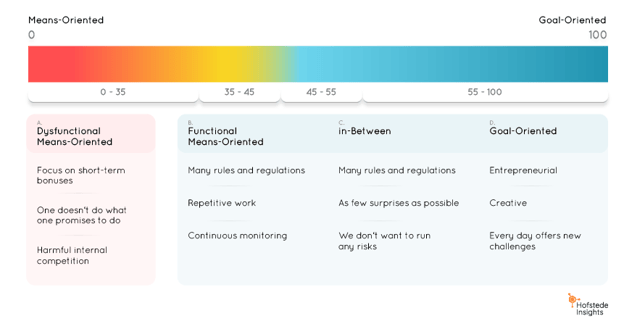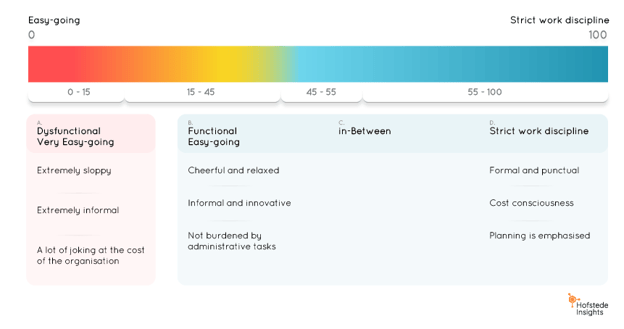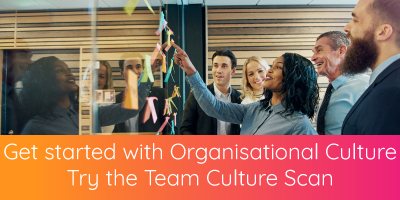- Solutions
-
Solutions
Transform your business with the power of culture.
-
-
Solutions for Individuals
Whether you work in a management team of a multicultural company or work as a consultant in the cultural field, we have solutions tailored to your business needs.
-
Solutions for Organisations
By utilising our research-based and practical approach we ensure that the results of the interventions are immediately applicable and with lasting effects.
-
-
- Resources
- Insights
- Network
- About us
How to foster a culture of innovation in a large company

Innovation has been a popular buzzword in the business world for quite a few years already. It’s something almost everyone wants to do, but also something that’s rarely clarified. It’s all too common that companies are telling themselves they’re innovative by adding a few new working practices without focusing on what they’re really trying to do. Innovation without a goal is a waste of resources.
In this article, we will go through the six steps you need to take to foster innovation in a large company. With honest self-reflection and commitment, these steps will help you and your organisation to be innovative in an effective way.
1. Decide on why you want to innovate and conduct a needs analysis
Innovation itself should never be the goal. It’s a tool or a means to an end that you can use to bring your organisation closer towards your goals. Perhaps you want to grow into new markets or meet customer needs by improving your products or creating new ones. Or, perhaps, you want to stand out among your competitors as the most innovative company in your industry. In none of these cases do you innovate for the sake of innovation. Instead, you look to innovate in order to be more successful either financially, in your branding, with talent acquisition or all of the above.
This is why you need to start from a proper needs analysis. What is it that you want to achieve by fostering innovation in your company? How many resources are you willing to spend to get there? Where in your organisation do you want the innovation to happen?
If your goal is to gain market share in a new market by improving your products, you, firstly, have to figure out where you are and then analyse the costs and the benefits of the transformation project. If you want to be widely regarded as the most innovative company in your industry, analyse where you are currently, and how that compares to your competitors. Is it worth the resources to start an organisational change project to get there?
2. Be clear on what kind of innovation you need
When you know why it is that you want to innovate, the next step is to analyse and decide what kind of innovation you need. Thinking “all innovation is innovation” is an easy miss-step to take. Chasing the wrong kind of innovation is not only ineffective but can even be counter-productive. There are several ways to innovate, but let’s focus on two to illustrate this point.
Incremental Innovation: If your goal is to improve your existing products, you would most likely do this via incremental innovation. This means gradually improving your existing products. With this kind of innovation, you are, usually, largely following the same processes you already have in place. The goal is to improve those processes so that the end result would be a better product, or you might make a better profit by cutting down costs to get that product.
Disruptive Innovation: When your goal is disruptive innovation, to create something that doesn’t exist yet, incremental innovation would be counter-productive. With disruptive innovation, you might create a product that doesn’t exist at all, or even a completely new market. That product, however, might require further development, or might be fairly expensive to produce. You wouldn’t get here by strictly following existing processes but by trying new things and accepting - even welcoming - mistakes.
These are only two out of the many options you have when it comes to innovation, so clarity on what kind of innovation you need is essential. It is also possible to promote two kinds of innovation at the same time, but we’ll get back to that when we discuss roles and expectations.
3. Understand how innovation works, and how your way of working affects it
Innovation is all about taking a different perspective on the same problem. Therefore, being innovative relies on creating a psychologically safe space, where people can keep their minds open and look at things from different angles. Having people from diverse national cultures can be a great asset because what better way to get new insights than to have people from different cultures look at the same problem. But if your working practices won’t allow diversity to flourish, you might have great ideas in your company without you ever hearing about them.
One key aspect of innovation is understanding where you are, and leveraging that unique position. At this stage, you should have already done your competitor analysis but understanding your position goes deeper than that. It requires you to have an honest and analytical - even critical - look into your own working practices. You need to understand if your practices support an innovative mindset, or if they’re working against it. You might think you’re supporting innovation by asking for ideas and opinions, but if all you do is end up shooting down all those ideas, you’re shooting down innovation.
This all comes down to truly understanding your Organisational Culture. It’s entirely possible to change every individual within a company and still work the same way, with new people following the same processes and using the same systems. It’s also possible to change processes and systems, and still work the same way, because it’s the same people using these systems and interpreting the processes. If you don’t affect the way they see things, they’re likely to try their hardest to work the way they used to.
The best and the easiest way to understand your current reality is to compile data through an objective tool like our Organisational Culture Scan. The Organisational Culture Scan allows you to get a snapshot of your Organisational Culture as a whole, and also allows you to divide and measure it in sub-cultures. This means that in addition to the overall culture, you can measure the cultures of different teams, departments, country offices or other functions that you deem necessary. Sub-cultures allow you to get an honest starting point for your transformation project and also enable you to fine-tune where necessary. This is absolutely crucial for larger organisations.
4. Align your Organisational Culture to support innovation
Now you know why you want to become innovative, what kind of innovation you need, and you also understand how your current way of working impacts innovation. The next step is to make changes. Once you know what you want to do and understand what you’re currently doing, you need to start bringing those two closer together. You start moving from what you are doing now towards what you want to be doing. This is another point where Organisational Culture really comes into play.
Focus on the goals
Innovation is not only about coming up with ideas. The ideas themselves are useless until you successfully implement them. This means goals are crucial. The Organisational Culture Scan measures this through what we call Organisational Effectiveness.
Organisational Effectiveness, in simple terms, tells you whether people in your organisation focus on how they do their work or what is being done. The graph below shows you an overview of what you might find in organisations landing differently on the scale.

Innovation tends to rise from being as Goal-Oriented as you can. However, especially in large companies, this needs to be applied with caution. Would you want your accounting department taking risks to achieve their creative goals? Certainly not. How about marketing? Even here the answer isn’t necessarily a straightforward ‘yes’. That’s why the goal is to be as Goal-Oriented as you can, not simply to maximize Goal-Orientation.
The previously mentioned sub-cultures are a great tool in this, and we’ll talk about that more in a moment. But first, let’s talk about Control.
Easy-going or Strict?
Earlier we discussed disruptive innovation and incremental innovation, and asked you to reflect on which kind of innovation you need in order to achieve your goals. We also discussed how incremental innovation benefits from stricter working practices but how those same practices would be harmful for disruptive innovation. In terms of the Organisational Culture Scan, we were talking about Control.
One end of the spectrum, strict work discipline, emphasizes formality, punctuality and cost-consciousness. Especially when combined with people focusing less on how they do their work and more on what they do, you can already start seeing how this combination could benefit incremental innovation, improving existing processes or products.
On the other hand, reduced control creates a more relaxed and informal atmosphere. It allows people to keep their minds open, not jump into conclusions and look at problems from new angles. This creates space for disruptive innovation.
The graph below offers an overview of the Control spectrum.

5. Clarify roles and expectations
We’ve already discussed the importance of clarity in innovation. What kind of innovation you’re looking for, and what you’re trying to achieve with the innovation should be clear to all parties involved. Innovation without a clear goal easily becomes wasteful. Being a learning organisation is an excellent way to support innovation, but if people don’t really understand what they’re supposed to achieve, it might not be very productive. Furthermore, the lack of clarity can easily begin to frustrate people. What if they’re full of great ideas, but none of those great ideas get executed because they’re not the kind of ideas that you’re looking for? Once again, shooting down ideas will only work against innovation.
From another point of view, there is no reason why you wouldn’t be transparent on your innovation goals. Innovation thrives when there is openness. When people treat knowledge as power, they set a dangerous precedent, encouraging others to do the same. This will not only actively work against the innovation itself but also decreases the likeliness that the innovation can ever be applied commercially.
In addition to the goals and expectations, also the roles should be clear. While everyone might be able to do a bit of everything in a small start-up, in large organisations the role differentiation should be obvious. You should be clear what’s expected not only functionally, but also culturally, when setting up these roles. If you use the Organisational Culture Scan, this is where sub-cultures come into play.
We’ve hinted at the power of sub-cultures earlier in this article. Sub-cultures are units, such as teams, departments, or even country offices within your organisation with their own organisational culture.

Remember how we mentioned that you can promote two kinds of innovation at the same time? That’s possible with sub-cultures. You can promote incremental innovation in some units(s) and disruptive in other(s). Especially in large global companies, it’s possible to bring national cultures into the mix and create diverse teams specifically focusing on looking at problems from very different angles and cultural standpoints. That is innovation in practice.
Sub-cultures are also one of your main tools when you want to promote innovation in general. For example, if you want to become more Goal-oriented, but don’t want the accounting department to become too creative, you do so by giving the accounting a sub-culture of their own. This allows you to measure and transform their culture separately. Sub-cultures are fully customizable and they can be given to all the functions you want to map individually. Our experienced consultants support you in every step of the process.
6. Measure your success
Once you are at the end of your transformation process it is important to ask questions like: Did we succeed? How do we know? The only way to find out is to measure it, ideally using the same method you used when you measured your starting state. You can certainly make guesses that you are indeed fostering a culture of innovation based on the number of new innovations that have come up, but that might all be just a coincidence. Especially in large companies, there’s also the danger that one part of the organisation has indeed improved, but the others have not, or have even taken a step back. None of this should be left to chance - what a waste would it be to go through this whole process without being sure how it worked.
Conclusion
Just because an organisation is large, it doesn’t necessarily mean that fostering innovation has to be exceptionally difficult. It might make things more complicated and require more analytical thinking, but on the other hand, you already have a steadier base and more resources at your disposal. At the same time, cultural change projects of any kind should always be data-driven. This is especially true for large organisations where it’s usually impossible to get an accurate feeling of how things are actually going around the organisation, in all the departments, teams, and other moving parts.
Get started today with our Organisational Culture Scan
